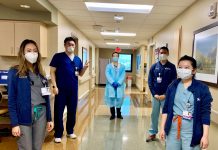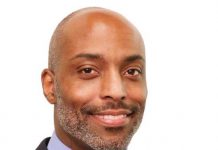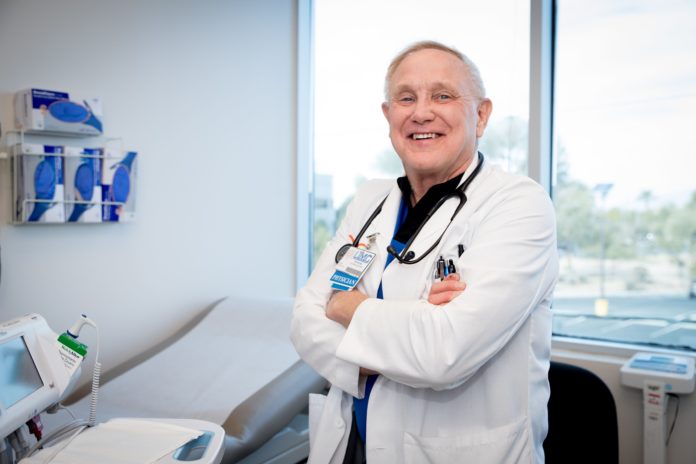Jerry Cade, MD, is an AIDS/HIV health care pioneer. University Medical Center’s HIV program formally began Aug 29, 1985. UMC’s AIDS Outpatient Clinic opened in November 1986. UMC’s dedicated HIV inpatient unit opened on July 5, 1987. These entities, along with UMC’s commitment to people living with HIV/AIDS formed the core of a comprehensive, health care delivery system for those with HIV/AIDS in Southern Nevada.
Cade, along with several other Las Vegas activists, began the process of creating a social service organization to help augment the medical services offered by UMC. AFAN was founded in 1984. Unfortunately, by 1989, AFAN was on the verge of going out of business. Cade reduced his practice to half-time, and took over as executive director of AFAN.
Cade turned AFAN around in the two years he was there. He initiated AFAN’s AIDS Walk, now AFAN’s biggest fundraiser. In two years, he quadrupled AFAN’s income, trebled AFAN’s staff and quintupled the number of clients that AFAN served. More importantly, Cade set AFAN on the trajectory that has made AFAN successful.
What made you so committed to finding ways to treat AIDS/HIV?
My friends were dying. I had to do something. At first, it was not possible to keep my friends and patients alive; but, we could make sure that no one died alone. So that became the foundation of our early program – making sure that no one died without the touch, feel and love of another human being.
Can you tell us how you came to open an AIDS unit at UMC?
I have been trying to clarify this issue for 34 years. The idea to open an AIDS unit at UMC was the nurses’ idea. I simply tried to implement and facilitate their ideas.
We have heard stories of doctors and nurses not wanting to work with you when you began this effort. Any of that true? Do you have a few quick stories for us?
First, the nurses have always been there for people living with AIDS. The nurses have always been great. Some of my colleagues were not always as great! Dr. Mel Pohl and I had a very busy family practice. We had a host of physician-specialists to whom we had referred our patients for years. Some of these physicians, not only would not see our patients, they wouldn’t even return our phone calls. However, even this story has a silver lining. Colleagues to whom we had not been referring outpatients volunteered to see our patients. Someone always came along to help out.
How did you end up finding nurses to help you in the wing?
Of course, this was a tricky issue. Ultimately, all nurses and all physicians, should be ready to work wherever they are needed, but at that moment in history, we thought everyone – staff and patients – would be better off if the staff was there voluntarily. We sent out an announcement and created a list of nursing staff that wanted to work on the HIV unit. We had more nurses that wanted to work with us than we had nursing slots, so we had to keep a list of staff, “on deck,” waiting for someone to retire.
Looking, back what was the one thing that happened that made you think we, as a community, would survive the AIDS epidemic?
The courage of the early AIDS patients, and the kindness of our community. Statistically, those early patients were going to die. They had to endure extreme prejudice. But, they pushed on anyway, reminding us of how indomitable is the human spirit. Our early patients’ courage and indefatigability was complemented by “the kindness of strangers.” I talked to more than one caregiver, who was taking care of an AIDS patient that he or she had known previously, but felt like this human being should be a part of his or her family.
What was the biggest medical breakthrough then?
The HIV world changed in 1996 with the advent of protease inhibitors. Prior to 1996, a diagnosis of AIDS gave you a 22-month life expectancy. But, with approval of saquinavir (12/95), then Ritonovir (3/1/96) and Indinavir (3/13/96) in 1996, the world changed–almost over night, with patients who were still alive during that time, that death sentence changed into their normal life expectancy.
Now?
We need to have a cure. That’s the next logical step.
Because it’s no longer a death sentence, some people say the younger generation is not taking AIDS/HIV seriously enough? Do you see a difference in how patients confront their condition?
There has always been a difference in how anyone confronts their health care challenges. It is only appropriate that we confront those challenges with the latest scientific evidence, in the context and social milieu in which we find ourselves. AIDS is a different disease than it was in 1981. It is only appropriate that today’s young LGBTQA+ members address the reality of the crisis they have, which was not the same as the crisis in the 1980s.



























